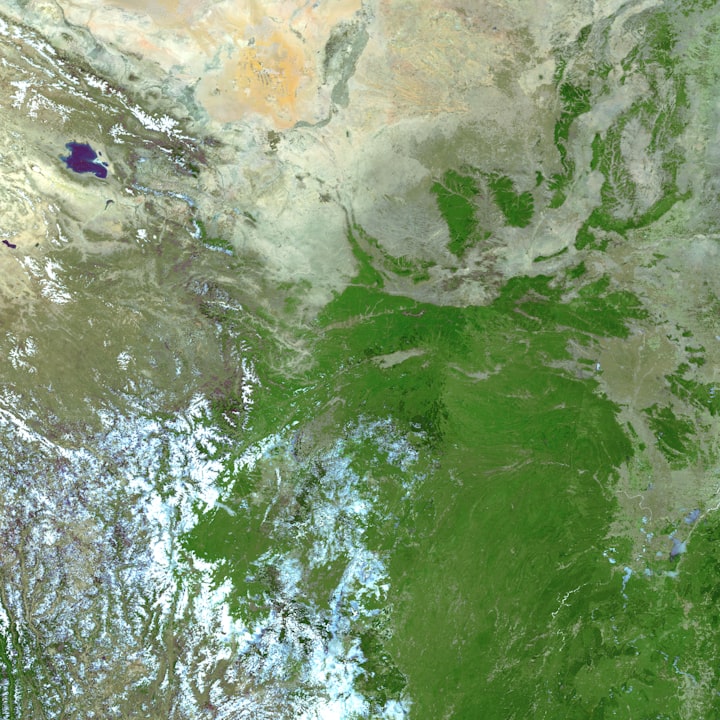The mystery of Earth's primitive atmosphere
Earth's atmosphere was very similar to Venus 4.5 billion years ago, and the popular theory of the origin of life may be under attack

An international group of scientists led by EH researcher Paul Sosa has shed new light on the Earth's atmosphere 4.5 billion years ago. Their findings also provide new insights into the origin of life on Earth.
Four and a half billion years ago, it was hard to recognize the Earth, with its surface completely covered by magma rather than the forests, mountains, and oceans we are familiar with today. And it is the scientific consensus that magma is molten rocky material produced during volcanic eruptions. What is less clear is what the atmosphere was like at the time.
Polo Ossify, a senior researcher at EH Zurich and the CRUNCH Planets Institute, has led new international research that seeks to unravel some of the mysteries of Earth's primordial atmosphere. The findings are published in the journal Science Advances.
Making magma in the lab
"Four and a half billion years ago, magma was constantly exchanging gases with the atmosphere above." So began to explain, "The air and the magma interact with each other. So you can learn from one or the other."
To understand Earth's original atmosphere, which was so different from today's, the researchers, therefore, created their magma in the lab. They did this by mixing a powder that matched the composition of Earth's molten mantle and heating it. What sounds straightforward requires the latest technology, as Sosa points out: "The composition of our mantle-like powder makes it very difficult to melt - we need about 2,000 degrees Celsius."
This requires a special furnace, heated by a laser, where researchers can make a gas mixture flow around the magma, causing it to float. These gas mixtures could be candidates for the original atmosphere that influenced magma 4.5 billion years ago. As a result, the magma will be a little different as each gas mixture flows around the sample.
"The key difference we're looking for is how the iron in the magma was oxidized." So explains. In more imprecise terms: how rusty. When iron encounters oxygen, it oxidizes and turns into what we commonly call rust. So when the scientists let a gas mixture containing large amounts of oxygen blow through the magma, the iron in the magma was oxidized even more.
This level of iron oxidation in the cooling magma gave Sosa and colleagues something they could compare to the natural rocks that make up the Earth's mantle today - known as periodontists. Iron oxidation in these rocks is still influenced by the primitive atmosphere within them. Thus, by comparing natural periodontists with laboratory periodontists, scientists have gained clues about which of their gas mixtures is closest to Earth's primordial atmosphere.

New insights into the emergence of life
"We found that after cooling down from its magma state, the young Earth had a slightly oxidizing atmosphere, which was dominated by carbon dioxide, as well as nitrogen and some water." So reports. The surface pressure was also much higher, almost 100 times higher than today, and the atmosphere was much higher due to higher surface temperatures. These features make it more like the atmosphere of Venus today than the atmosphere of Earth.
According to Sosa and his colleagues, there are two main conclusions to this result: The first is that Earth and Venus started with very similar atmospheres, but Venus then lost water due to its closer proximity to the Sun and the associated higher temperatures. However, the Earth retains water, mainly in the form of oceans. In this case, a significant amount of carbon dioxide from the air is absorbed, thus significantly reducing carbon dioxide levels.
The second conclusion is that the popular theory about the emergence of life on Earth now seems unlikely. The so-called "Miller-Ur experiment" is difficult to realize. In this experiment, lightning strikes interact with certain gases (especially ammonia and methane) to produce amino acids, the basic elements that makeup life. The required gases were simply not sufficient.
Miller-Urey experiment
The Miller-Urey experiment (MEW) is an experiment that simulates a hypothetical early Earth environment, studied to test the occurrence of chemical evolution. Specifically aimed at the Alexander Paring and John Burton Thorn tests, the doctrine suggests that the early Earth environment made it easier for the synthesis of organic compounds from inorganic substances to take place.
The Miller-Urey experiment is one of the classic experiments on the origin of life, led by Stanley Miller and Harold Urey of the University of Chicago in 1953, and its results were published as A Production of Amino Acids Under Possible Primitive Earth Conditions). Miller's experiment was quite inspirational for the subsequent exploration of antibiotic synthesis of prediction molecules and remains a classic experiment in textbooks on the origin of life.
In an interview with Scientific American more than 40 years after this experiment, Professor Miller said, "The mystery of the origin of life turned out to be more difficult to solve than I and most others had estimated."
Dean Kenyon, a professor of biology, said, "All current theories that explain the origin of life in terms of chemistry make fundamental errors." Experiments have proven him right. After Miller and other scientists synthesized amino acids, scientists set out to make proteins and DNA; both of which are necessary for living things on earth to sustain life.
Scientists conducted thousands of experiments in environments before the origin of life, but essentially "always failed" at synthesizing proteins and DNA.
About the Creator
Cindy Dory
When you think, act like a wise man; but when you speak, act like a common man.






Comments
There are no comments for this story
Be the first to respond and start the conversation.